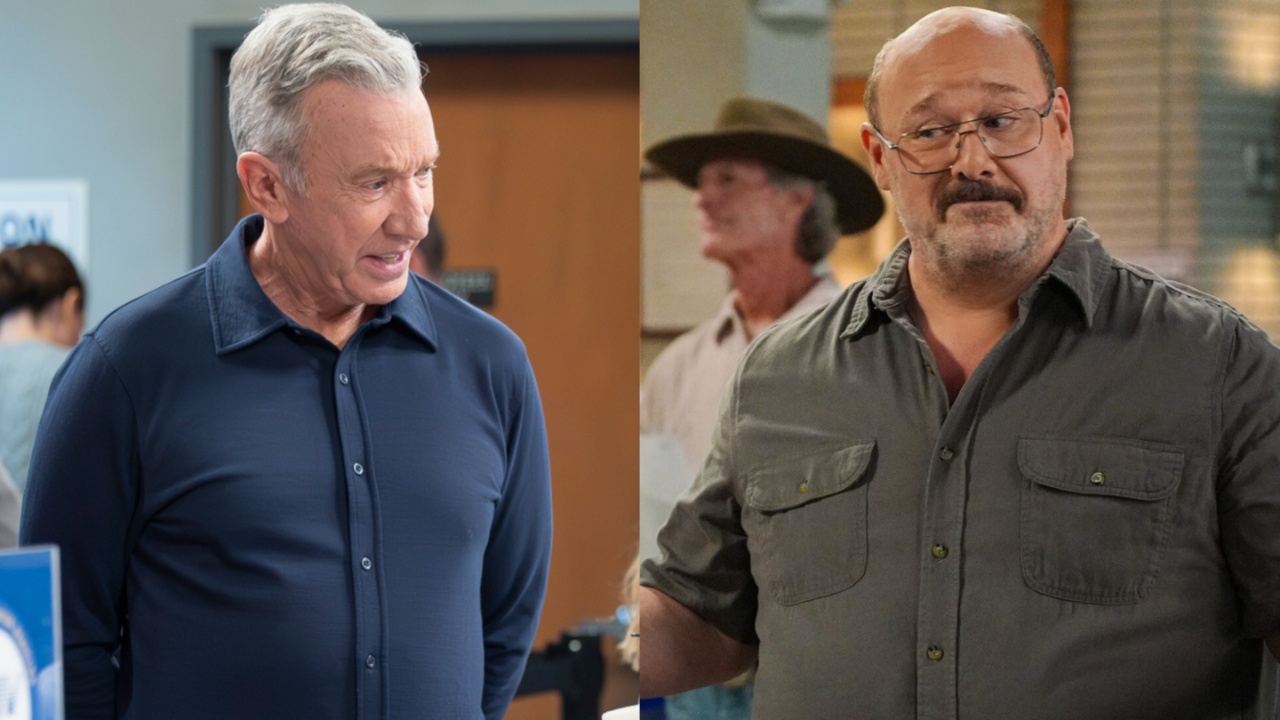Michael J. Fox Addresses The Back To The Future Inconsistency That Can't Be Blamed On Time Travel Shenanigans
Chuck Berry and Gibson guitars!
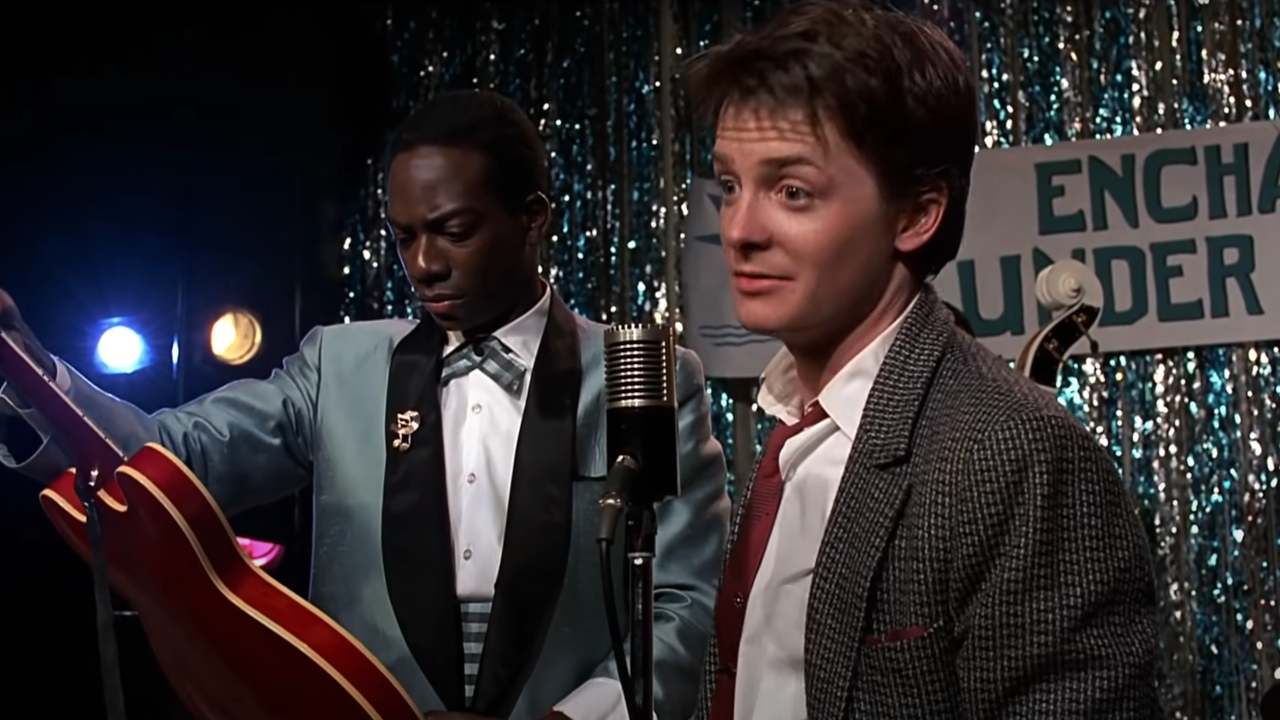
For 40 years, people have been discussing the time travel inconsistencies in Back to the Future. People, especially on the internet, love to talk about how time travel works in movies. One of the more ridiculous examples, in my opinion, comes from the 1985 mega hit, and it involves the Gibson ES-350 that Marty (Michael J. Fox) plays “Johnny B. Goode” on at the Enchantment Under The Sea dance in 1955. It’s not a fault of the time travel, but actually a decision made by the art department on the film. Fox talks about the “controversy” in his new memoir.
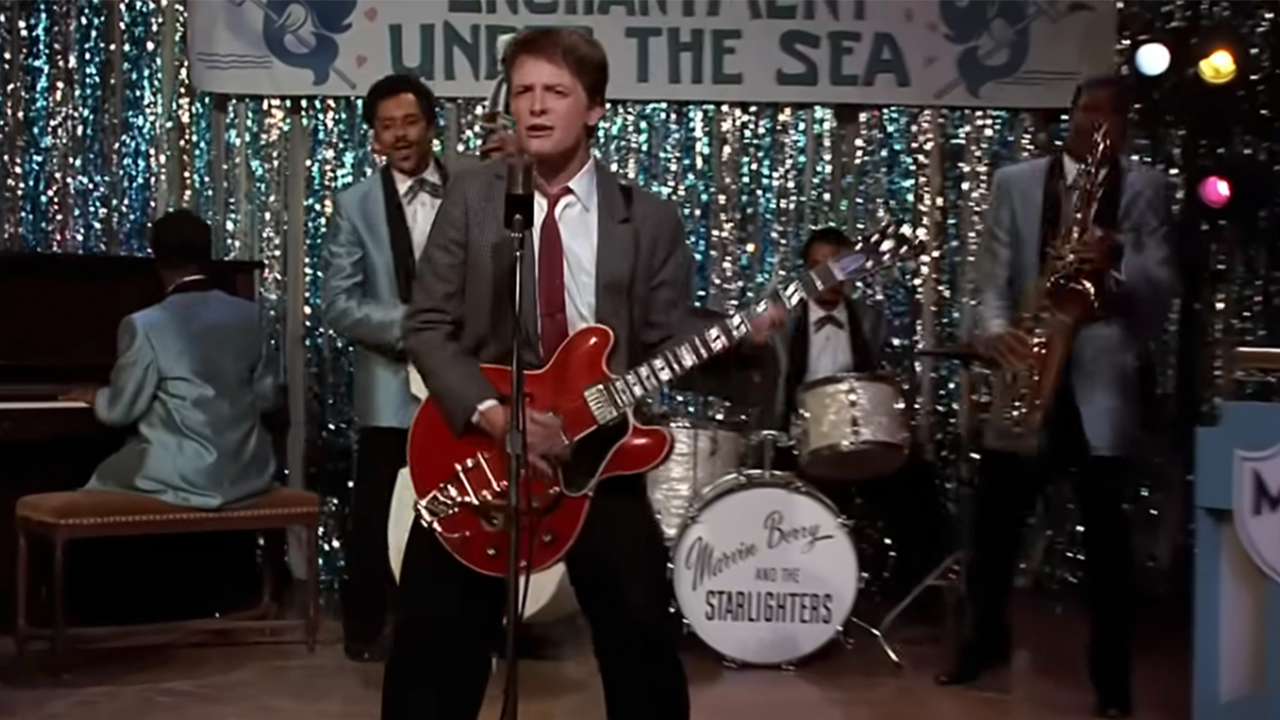
The Guitar In The Movie Wasn’t Released By Gibson Until 1958
Fans of BTTF know that Marty travels from October 26th, 1985, back to November 5th, 1955. In his attempt to make sure his parents fall in love at the right time, keeping the timeline of the future consistent, Marty stands in for Marvin Berry in the band at the dance. He borrows Marvin’s guitar, a semi-hollow body, model number ES-345. Gibson is renowned for its ES series; the first, the ES-150, was introduced by the company in 1936. Gibson has been producing ES guitars ever since, with dozens of models over the years.
The problem that guitar aficionados love to point out is that the ES-345 model, like the one in the movie, wasn’t introduced to the market until 1958, three years after the Enchantment Under the Sea Dance. In his book, Future Boy: Back to the Future and My Journey Through the Space-Time Continuum, via Syfy, Fox writes about:
a temporal inconsistency that guitar aficionados and Back to the Future fans have pointed out again and again. Granted, this is noteworthy only for the thousands of Future heads who clock every detail in the movie and parse every quirk in the timeline continuum
According to Fox, a debate has raged over whether this “inconsistency” was intentional or not. That debate has been settled now. It was not a quirk of time travel, it wasn’t even planned:
But there’s no cinematic Easter egg intended here—the film’s art department simply picked the ES-345 because it evoked the iconic wine-red axe that Chuck Berry famously duckwalked across stages all over the world.
That’s it. It was just the prop that was chosen because it resembled a guitar that Chuck Berry would play, though he was famous for playing other models, most notably an ES-350T. But since we’re on the topic of inconsistencies, let’s talk about the song Marty plays and Marvin’s phone call to his “cousin” Chuck Berry (Marvin is a fictional character).
‘Johnny B. Goode’ May Have Been Written Before The Dance, Too
Chuck Berry recorded his iconic hit “Johnny B. Goode” in late 1957, and it was released in 1958 (coincidentally, the same year the Gibson ES-345 was introduced). It was reported written a couple of years early, or, at least, started being written in 1955. So that “new sound” that Chuck was looking for, according to Marvin, had probably already been discovered by Berry by the time the dance happened in November of ‘55
Furthermore, Berry recorded another one of his most iconic songs, “Maybellene,” in May 1955 at Chess Records’ studio in Chicago and released it in June, five months before the dance. “Maybellene” doesn’t have a legendary opening riff like “Johnny B. Goode,” but it’s definitely in the style Chuck Berry would become world famous for.
Your Daily Blend of Entertainment News
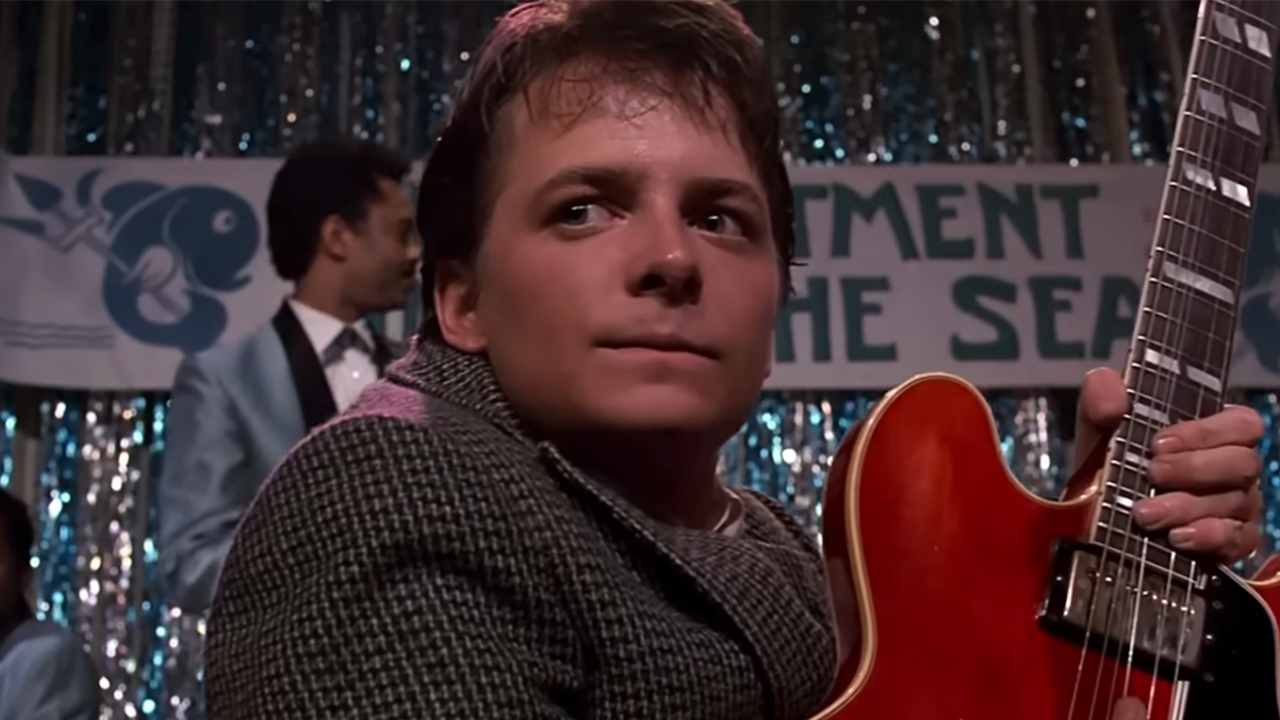
The Famous Riff Is Even Older
That’s not all, Berry himself acknowledged that he was “inspired” by the riff that opens the song “Ain't That Just Like a Woman,” by Louis Jordan, which was recorded in 1946! All it takes is one listen to determine that the riffs are almost identical. It’s safe to assume Berry already knew the riff and was likely even playing in concert in one way or another in the months and maybe years before Marvin’s phone call in 1955.
What’s the point of all this? Well, I’m on Michael J. Fox’s side. Who cares about the exact timeline and whether everything in it is perfectly period-correct? It’s one of the best scenes in one of the best movies of the ‘80s. Just enjoy it, especially since Back to the Future will be back in theaters for a limited time starting next week!
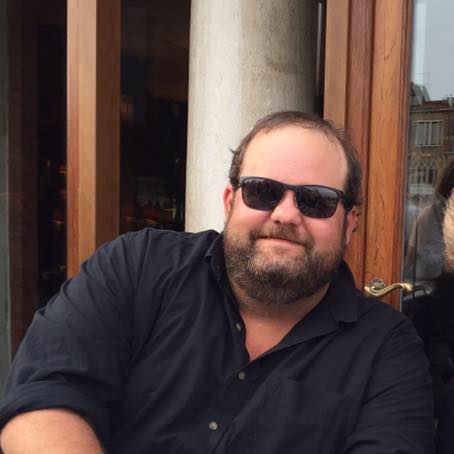
Hugh Scott is the Syndication Editor for CinemaBlend. Before CinemaBlend, he was the managing editor for Suggest.com and Gossipcop.com, covering celebrity news and debunking false gossip. He has been in the publishing industry for almost two decades, covering pop culture – movies and TV shows, especially – with a keen interest and love for Gen X culture, the older influences on it, and what it has since inspired. He graduated from Boston University with a degree in Political Science but cured himself of the desire to be a politician almost immediately after graduation.
You must confirm your public display name before commenting
Please logout and then login again, you will then be prompted to enter your display name.
